 There were some lovely lightbulb moments when studying to become an osteopath, none more so than when we talked about A.T. Still's (the founder of osteopathy) assertion that structure governs function and vice versa. This is one of the basic tenets of osteopathy and is such a simple idea and yet so elegant and indeed really powerful. Modern architects, and industrial designers talk about form following function...but in the body it is so much more. You may think a baby is like a mini adult, if you were to see a baby's skeleton it would just be that of a small person. Not so. Much of the intricate structure of the skeleton is laid down as done in response to the forces that pass through it. The size of muscle attachments depend on the forces they are required to cope with, as do the overall shape density and internal geometry of long bones. Our activities carry on changing our body's structure all the way through out life. Too much time staring at a badly positioned screen and you can end up with a head forward posture, work out a lot and you'll get bigger muscles and muscle attachments. The structure of the your body and the elements within it also dictate the limits of its function. You can't bend your elbow far in the extended direction because the olecranon hits the base of the olecranon fossa. If it didn't then you'd almost certainly damage soft tissues, blood vessels and nerves, so it's a good job all in all! As we get older we can become more and more limited as our structure becomes further and further from the ideal. A really good example of this is the head forward rounded shoulder posture of the typical office worker. The head is heavy, so once it sits anteriorly gravity tries to pull it further so. As it comes forward and the upper back starts to round, so the shoulders start to move so they sit more forward. Shoulders are not designed to sit protracted like this. Like every other joint they have compromised range of movement for stability, protection and to provide muscle attachments. If your shoulders are sat where they should be there is no bony encumbrance to raising your arms out to the side and nearly to pointing vertically (actually this is a slight simplification because your arm does a little trick to avoid one but to all intents and purposes...). If the shoulder is tipped forward then so are all the structures. You want to reach straight up but to the shoulder that is reaching up and back...try it now, you can only get to about 80'. Rounded shoulders also internally rotate the arms meaning if you want us the hands in the neutral position you have to externally rotate the forearms which can lead to tight muscles and repetitive strain injury and can also alter cause both blood and nerve supply to become restricted leading to pain, numbness, tingling and even loss of function. As usch the change in structure can have a very profound effect on function both directly and perhaps indirectly. If the back is curved like that for long enough the vertebrae will start to wedge and it will not be easily reversed and in some elderly patients osteoporotic crush fractures have caused the vertebrae to wedge significantly. For many of us though it is still early enough days to correct our rounded shoulders and our head forward some relatively easy exercise and stretches, a well adjusted workstation and some mindfulness about posture can all help significantly...oh and some help from your osteopath might not go a miss. As osteopaths we believe that it is important that joints are meant to move and that they require movement to remain healthy. Much of the treatment I give is about getting joints moving that aren't, and rebalancing the tone of tissues such as muscles around the joint so that impediments to full and free movement of the joint are reduced. The 'cure' comes from the movement and the body's response to that movement, recalibrating its neutral position, pumping away waste and replenishing nutrients. Rome wasn't built in a day but today is as good a day as any to start thinking about the small changes to the structure of your body which limit function and asking yourself how you might reverse them
0 Comments
Your comment will be posted after it is approved.
Leave a Reply. |
Archives
February 2024
AuthorDamian is the principal osteopath at Vauxhall Village Osteopathy and Oval Osteopathy Categories
All
|


 RSS Feed
RSS Feed


